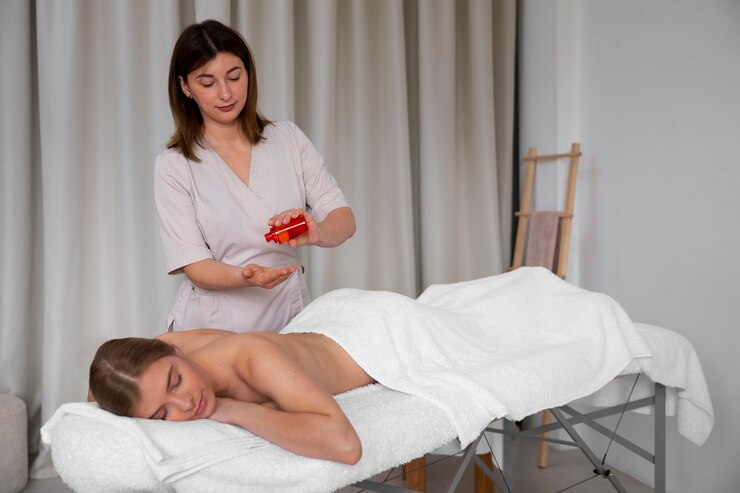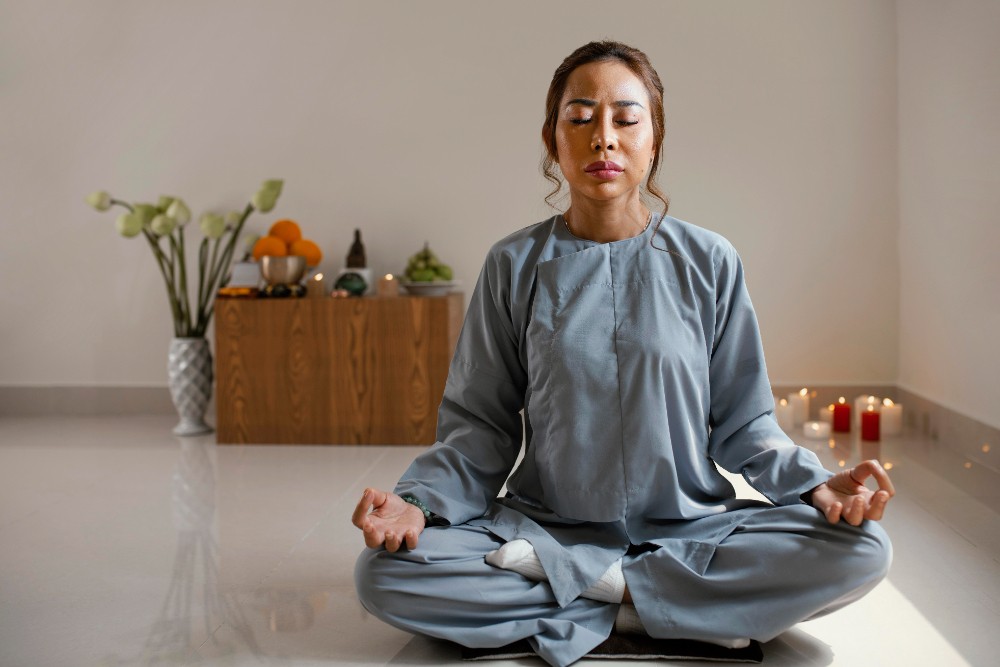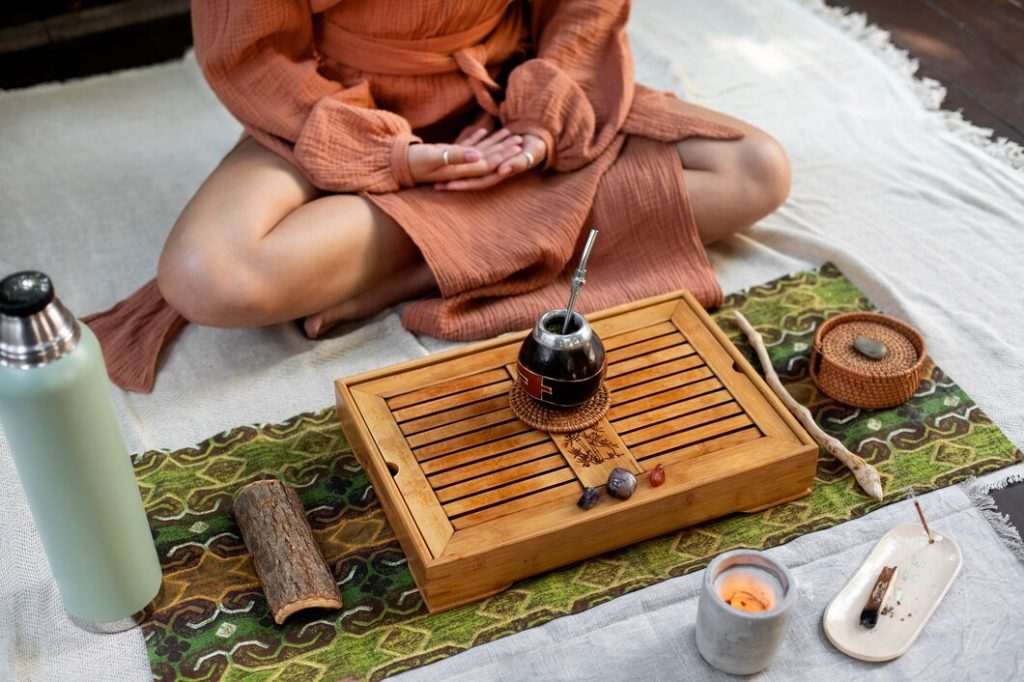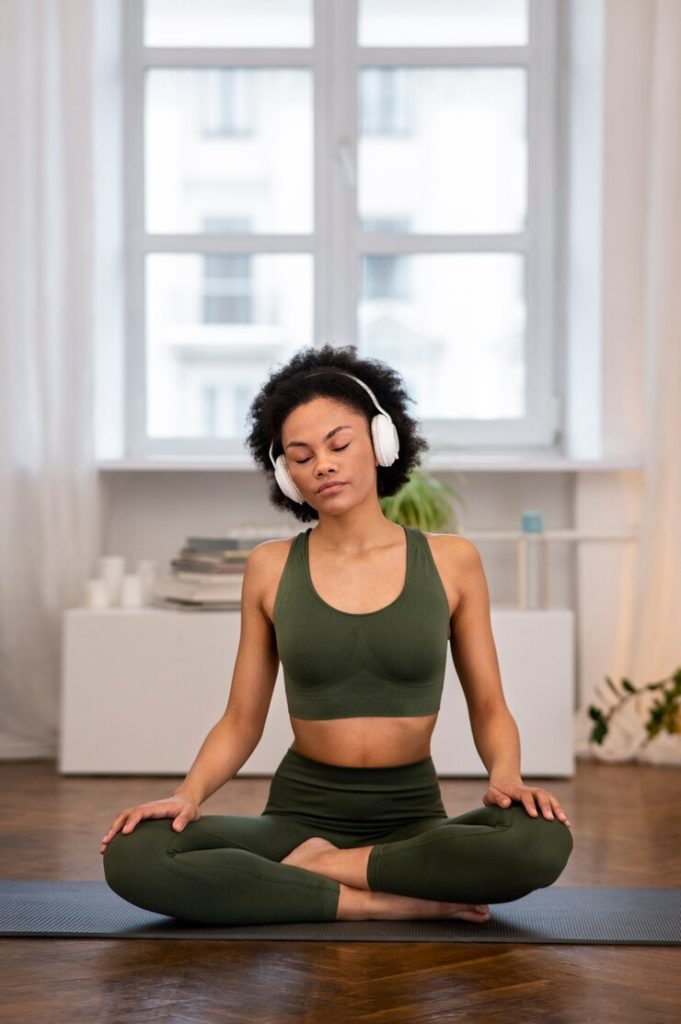Discovering Panchakarma: The Ayurvedic Detox You Need to Know About
If you have ever felt overwhelmed by stress or found yourself out of balance, you might be looking for a solution that goes beyond conventional medicine. This is where panchakarma comes in, serving as a cornerstone of Ayurvedic healing! Whether you are new to Ayurveda or simply curious about its holistic approaches, this article will help you explore the fascinating world of panchakarma, uncover its benefits, and understand how effective it can be.
What is Panchakarma?
Panchakarma, which translates to “five actions” or “five therapies” in Sanskrit, is a fundamental aspect of Ayurveda, the ancient Indian system of medicine. This comprehensive treatment program is designed to cleanse and rejuvenate the body, mind, and consciousness. Grounded in Ayurvedic principles, it recognizes that every individual uniquely embodies the five fundamental elements: Ether, Air, Fire, Water, and Earth. These elements combine to form three doshas: Vata, Pitta, and Kapha, each specific to the individual.
Disruption of this balance can cause health issues, as maintaining harmony among the doshas is crucial for overall well-being.
This holistic approach focuses on detoxification and rejuvenation, aiming to cleanse the body of accumulated toxins, known as ama. These toxins can develop due to poor diet, lifestyle choices, environmental factors, and stress, leading to imbalances that affect both physical and mental health. Before beginning panchakarma, an Ayurvedic practitioner will conduct a thorough assessment of the patient’s health, lifestyle, and dosha (body constitution).
Panchakarma Process Flowchart/table
This flowchart outlines the key stages of the panchakarma process, helping to clarify each step involved in the detoxification journey.
Initial Consultation |
| |
Assessment of Doshas |
| |
Preparation Phase |
| |
Light Diet |
Herbal Preparations |
| |
Detoxification Phase |
Virechana (Purgation) |
Basti (Enema) |
Nasya (Nasal Treatment) |
Raktamokshana (Bloodletting) |
Abhyanga (Oil Massage) |
|
| |
Rejuvenation Phase |
Nourishing Diet |
Yoga and Meditation |
| |
Post-Cleanse Maintenance |
| |
Follow-Up Consultation |
|
Purvakarma: Pre-Purification Steps
Before starting the actual purification process, it’s essential to prepare the body to release toxins. This preparation involves two key steps:
Snehana (Oleation- the process of using oils)
Snehana refers to an oil massage. During this process, warm oil or ghee or other unctuous substance, is applied all over the body using specific techniques that help move toxins toward the gastrointestinal (GI) tract. This massage not only softens the skin and deeper tissues, making them more supple but also helps reduce stress and nourish the nervous system. Typically, snehana is performed daily for about three to seven days, depending on individual needs.
Svedana (Sweating)
Next is svedana, which means sweating in sanskrit. This step is performed right after snehana. Often, herbal mixtures are added to the steam to enhance the detoxifying effect. Svedana helps liquefy the toxins and encourages them to flow into the digestive system. There are several methods employed here which depend on individual factors.
-”Bashpa Swedana”: Involves sitting in a steam box where herbal steam induces sweating and opens pores for toxin elimination.
-”Nadi Swedana”: Directs steam to specific body areas using a tube or nozzle, targeting localized treatment for joints or body parts.
-”Pinda Swedana”: Uses warm herbal poultices filled with cooked rice, herbs, and oils, massaged over the body to induce sweating and promote relaxation.
-”Patra Pinda Swedana’: Similar to Pinda Swedana, but uses poultices made from specific medicinal herbs like Nirgundi and Shigru for additional therapeutic benefits.
There are several contraindications for both of these steps. So, it’s best to seek professional consultation!
After three to seven days of snehana and swedana, the doshas of the patient will be well-prepared to undergo the panchakarma process, tailored to your individual constitution, imbalances and health needs.
The Panchakarma Process
The five basic shodanas or cleansing methods of panchakarma are as follows:
- Vamana (Therapeutic Vomiting): This therapy involves inducing controlled vomiting to expel excess mucus and toxins from the upper digestive tract and lungs. More specifically, it consists of/in XX during XX lengths/days/hours? It’s particularly beneficial for those with a kapha dosha imbalance, characterized by congestion, lethargy, and weight gain. This process often releases repressed emotions stored in the kapha areas of the lungs and stomach, along with excess dosha. When done correctly, it helps the person feel relaxed in the lungs, breathe freely, experience chest lightness, think, have a clear voice, enjoy a good appetite, eliminate congestion symptoms and revitalize energy levels. After vamana, it’s recommended to rest, fast, use certain herbal cigarettes (herbal cigarettes are made from natural herbs like tulsi, neem, mint, and licorice, offering a healthier alternative to tobacco cigarettes with medicinal benefits), and avoid suppressing natural urges like urination, sneezing,etc.
- Virechana (Purgation): Virechana is a purging therapy which should be performed three days after vamana or independently if vamana is not suitable. It mainly focuses on cleansing the small intestine, liver and gallbladder. Substances commonly used for purgation include triphala, castor oil, sat isabgol (psyllium seeds), flaxseeds, etc. Through the use of such herbal laxatives, this process effectively detoxifies vital organs such as the blood, kidneys, stomach, small intestine, and liver. It’s especially beneficial for those with pitta dosha imbalances, which can manifest as acidity, irritability, and skin issues. By promoting healthy bile flow, this method enhances digestive function and revitalizes overall health.
Note: Undergoing 3 days of internal oleation, including both snehana and svedana as a preparation is a necessary measure. It should always be conducted under care of Panchakarma professionals.
- Basti (Medicated Enema): Basti is a medicated enema therapy that introduces herbal oils or decoctions into the rectum. This treatment is beneficial for balancing vata dosha, which governs movement and function in the body. Vata is key in processes such as eliminating waste from the body and significantly influences the development of diseases. By managing vata, multiple health issues can be addressed at their root. While vata is primarily found in the large intestine, it also affects bone tissue. When using rectal medication, this process can reach the bones and help fix vata imbalances. The colon’s lining is connected to the bones, so the treatment can nourish and support bone health too. Basti helps detoxify the lower gastrointestinal tract, nourishes tissues, and promotes overall vitality. It is known for its ability to relieve constipation and lower back pain while improving hydration and nutrient absorption.
- Nasya (Nasal Therapy): Nasya involves administering herbal oils or powders through the nostrils to cleanse and rejuvenate the nasal passages, throat, and sinuses. The nose is a gateway to the brain and consciousness, making nasal treatment, known as nasya, an effective way to deliver medication. This method helps clear excess bodily humors from the sinuses, throat, and head through the nose, the nearest opening.
Prana, or life force, enters the body through nasal breathing, influencing sensory and motor functions, as well as mental activities like memory and concentration. When prana is disturbed, it can lead to headaches, memory loss, and other issues.
Nasya is beneficial for conditions like sinus congestion, clearing excess mucus, migraines, certain eye and ear problems promoting mental clarity. It’s particularly helpful for individuals with frequent headaches, allergies, or respiratory issues, as it enhances airflow and reduces inflammation in the nasal cavity.
- One simple nasya technique involves gently massaging the inner walls of the nose with a finger dipped in ghee, which can help release blocked emotions.
- For safety, fingernails should be kept short and massaged slowly, first in a clockwise motion and then counter-clockwise.
- This technique can be done each morning and evening, improving breathing patterns and potentially enhancing eyesight by releasing trapped emotions.
- Raktamokshana (Bloodletting): Although less commonly performed, Raktamokshana is a therapeutic bloodletting technique aimed at purifying the blood. The toxins in the GI tract enter the bloodstream, leading to toxemia, which may cause repeated infections, high blood pressure, and skin issues like rashes and acne. It helps balance pitta, which can create blood toxicity. It is a treatment for conditions like an enlarged liver and gout. Bloodletting, sometimes done with leeches, can relieve this tension and boost the immune system.
Note: Avoiding substances like excess sugar, salt, yogurt, cold foods/drinks, coffee, tea and alcohol is important during treatment to keep the blood clean. Other methods, such as herbs or gem therapy, can also support blood purification. By removing impure blood, this therapy contributes to healthy circulation.
Post-treatment Diet and Lifestyle
Following the suitable procedures for the patient dosha and imbalances, the patient will enter a rejuvenation phase that may include dietary recommendations and lifestyle changes to maintain the benefits. This period is crucial for sustaining the newfound balance of body and mind. It’s important to focus on light, easily digestible foods. The digestive system can be sensitive post-treatment, so the diet starts with a liquid phase of soups and rice gruel. Gradually, patients transition to semi-solid foods before moving to heavier meals. The diet is tailored to individual health needs, such as conditions like arthritis, ensuring a safe and effective recovery. Patients also receive personalized guidance including daily routines, exercise, yoga, and meditation to enhance detox benefits and support overall health.
Why Panchakarma?
In today’s world, our bodies are constantly exposed to stressors and toxins from various sources. From the daily personal hygiene products we use, processed foods we consume, the pollution in our environment, to the relentless pace of modern life. All these actions lead to accumulation of ama which blocks our nadis (energy microchannels) and easily disrupts our body’s natural equilibrium. If not addressed promptly, there will be a myriad of health issues that follow overtime. Common consequences include chronic fatigue, digestive disorders, weakened immunity, anxiety, and even more severe chronic diseases.
What are the benefits?
- Serves as a preventive measure for health maintenance and complements the management of chronic conditions like respiratory issues, digestive troubles, skin conditions, and musculoskeletal pain.It restores and improves the functioning of vital organs.
- Rather than merely treating symptoms, panchakarma seeks to address the root causes of imbalances.
- This personalized treatment works synergistically to encourage the body’s natural detoxification processes, enabling it to eliminate waste and toxins from the body and mind effectively.
- Balances the three doshas (vata, pitta, and kapha) for overall health and prevention of future issues.
- Rejuvenates the body by strengthening tissues, boosting digestion, enhancing metabolism, and boosting the immune system, helping to slow aging and increase energy.
- Treatments like Snehana or Abhyanga (oil massage) enhance digestive energy (Jatharagni) for better nutrient absorption and waste elimination, enhance flexibility of joints and improve skin health.
- This process also supports mental and emotional well-being by promoting relaxation, reducing stress and enhaning mental clarity.
When is the best time to undergo Panchakarma?
The ideal month for panchakarma therapy really hinges on the patient local climate, since each dosha shines during a specific season:
- Vata: Fall and early winter- think of the airy vibes of ether and wind.
- Pitta: Summer- embrace the fiery essence of fire and water.
- Kapha: Late winter and early spring- ground oneself with the earth and water elements.
To get the most benefits from panchakarma, aim for the transition period between these seasons. This timing is perfectly aligned with the environment and the body’s needs.
How often should we do Panchakarma?
For optimal results, it’s recommended to undergo panchakarma twice or three times a year, specifically when the dosha associated with the current season is at its peak. This is because, as the qualities of the environment change, whether it’s the dryness of vata in fall, the heat of pitta in summer, or the heaviness of kapha in spring, these shifts also affect our internal balance. Aligning the detox process with these seasonal changes helps to easily restore mind-body balance.
How long do the effects last?
The lasting benefits depend on the individual health going into the process and how carefully is handled the transition back to a regular way of life. Gradually reintroducing heavier foods is key to avoiding digestive overload and preventing toxins from creeping back in.
- Are all the five therapies necessary?
Performing all five treatments at once could overwhelm the body, potentially leading to discomfort or adverse effects. Different Panchakarma treatments target specific doshas (Vata, Pitta, Kapha). Simultaneously addressing all doshas could create imbalances rather than resolve them. By focusing on one or two treatments at a time, practitioners can better restore balance.
Safety and Monitoring for Pre-existing conditions
Some treatments can be intense or require close monitoring, especially for individuals with pre-existing health conditions. Spacing out the processes allows practitioners to observe how the body responds and adjust treatments as necessary.
Is it safe to try it at home?
Panchakarma is a powerful healing modality of Ayurveda, but diving into it at home can be a bit like trying to bake a soufflé without a recipe, risky and potentially messy! While the idea of enjoying this rejuvenating experience in the comfort of your own home sounds tempting, we really recommend working with a trained and licensed practitioner.
Certain conditions may require modifications or contraindications, which is why it is important to seek out a knowledgeable ayurvedic/siddha professional! They will make sure the patient will get all the benefits, by providing guidance through the whole process and ensuring that it is safe and tailored to anyone’s unique constitution, without any of the guesswork! It is also essential to choose a reputable facility that adheres to the standard guidelines.
What does research say?
- Detoxification: A 2021 study published in the Journal of Ayurveda and Integrative Medicine found that Panchakarma significantly reduced levels of heavy metals and toxins in the body.
- Stress Relief: A 2020 study in the International Journal of Yoga indicated that participants who underwent Panchakarma reported substantial reductions in stress and anxiety levels.
- Digestive Health: Another research article from 2022 noted that Panchakarma therapies improved digestive function and alleviated symptoms of conditions like irritable bowel syndrome (IBS).
- Skin Health: A recent study in 2024 demonstrated that individuals undergoing Panchakarma experienced improved skin elasticity and hydration, contributing to a healthier appearance.
Conclusion
Panchakarma is more than just a detox; it transforms our mind, body, and spirit. With growing research backing its effectiveness, this traditional therapy offers hope for those seeking alternative options for healing. By restoring balance and vitality, it offers a path toward optimal health and well-being, making it an invaluable practice in today’s challenging environment.
Key takeaways!
- Each person has unique health needs, so treatments are tailored accordingly.
- Spacing out the panchakarma treatment process helps the body adapt and prevents overwhelm.
- Different treatments target specific doshas; focusing on one or two at a time maintains balance.
- Some treatments require close observation, especially for those with health conditions.
- Each process needs specific prep and post-care, ensuring maximum benefit and safe reintroduction to regular activities.
References
https://ayurveda.com/how-often-can-someone-go-for-a-panchakarma-procedure/
https://vikaspedia.in/health/ayush/ayurveda-1/panchakarma
https://doi.org/10.1016/j.jaim.2021.06.020
https://acspublisher.com/journals/index.php/irjay/article/view/16126/14503





